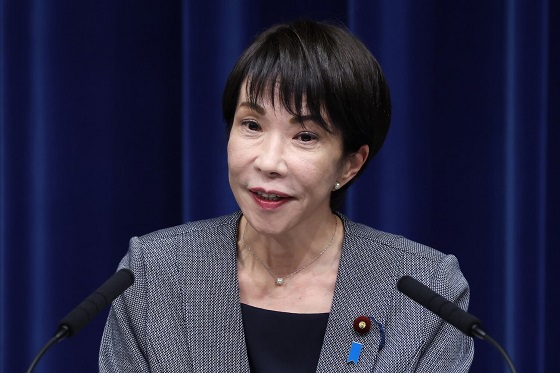Alberta
What is the Great Reset?

We are nearing one full year since the outbreak of the COVID-19 pandemic began sweeping the globe, ravaging all major industries worldwide and forcing the global economy to grind to a near halt. 2020 has been dominated by social and political upheaval as officials have struggled to find the balance between economic lockdown and protecting the public from the virus. Adding to the uncertainty, disinformation is circulating at an unfathomable rate. Heading into December, tension and mistrust appear to be at an all time high as individuals and groups have begun to rebel against lockdown orders and what many believe to be government forces overstepping their democratic boundaries.
Among the hype and hysteria, the “Great Reset” has become a popular and highly divisive topic in recent months. Aggressive disagreements have broken out among experts, political leaders and the general public, often citing controversial buzzwords like “socialism”, “government control”, and “elite agenda”. In this setting, it has become increasingly difficult to determine what is fact and what is fiction, as fear and confusion fuel conspiracy theories and government distrust.
 COVID-19: The Great Reset is a book originally published in July 2020, co-authored by Thierry Malleret, founder of the Monthly Barometer, and Klaus Schwab, founder and Executive Chairman of the World Economic Forum (WEF). This book elaborates on a recovery plan proposed by the WEF that presents the global COVID-19 pandemic as an opportunity to correct the shortcomings of the existing social, economic and political institutions around the world. According to the WEF, “The inconsistencies, inadequacies and contradictions of multiple systems – from health and financial to energy and education – are more exposed than ever amidst a global context of concern for our lives, livelihoods and the planet.”
COVID-19: The Great Reset is a book originally published in July 2020, co-authored by Thierry Malleret, founder of the Monthly Barometer, and Klaus Schwab, founder and Executive Chairman of the World Economic Forum (WEF). This book elaborates on a recovery plan proposed by the WEF that presents the global COVID-19 pandemic as an opportunity to correct the shortcomings of the existing social, economic and political institutions around the world. According to the WEF, “The inconsistencies, inadequacies and contradictions of multiple systems – from health and financial to energy and education – are more exposed than ever amidst a global context of concern for our lives, livelihoods and the planet.”
 Within this setting, the WEF calls for collaboration among experts and world leaders to propose and implement a vision for the future that will “build a new social contract that honors the dignity of every human being.” The values highlighted by the Great Reset propose an ideological shift away from capitalism. This includes shifting the global focus towards fairer market outcomes, the advancement of sustainability measures and the improvement of environmental, social and governance (ESG) metrics across industries.
Within this setting, the WEF calls for collaboration among experts and world leaders to propose and implement a vision for the future that will “build a new social contract that honors the dignity of every human being.” The values highlighted by the Great Reset propose an ideological shift away from capitalism. This includes shifting the global focus towards fairer market outcomes, the advancement of sustainability measures and the improvement of environmental, social and governance (ESG) metrics across industries.
 The Great Reset global agenda calls for unprecedented cooperation among countries and industries around the world to unite under one recovery strategy aimed at repositioning the current trajectory of society as a whole. “Rather than using recovery funds to fill cracks in the old system,” says Klaus Schwab, founder and executive chairman of the World Economic Forum, “we should use them to create a new one that is more resilient, equitable, and sustainable in the long run.”
The Great Reset global agenda calls for unprecedented cooperation among countries and industries around the world to unite under one recovery strategy aimed at repositioning the current trajectory of society as a whole. “Rather than using recovery funds to fill cracks in the old system,” says Klaus Schwab, founder and executive chairman of the World Economic Forum, “we should use them to create a new one that is more resilient, equitable, and sustainable in the long run.”
The World Economic Forum’s Great Reset initiative has received support from several influential organizations around the world, including TIME Magazine, Apple and Microsoft. However, while it appears many have signed onto this initiative as a unique opportunity to build a prosperous future for all members of the human race, an equal number have emerged to furiously oppose it.
Opponents of the Great Reset have labeled it as a radical socialist agenda being pushed on the masses by global elites. The initiative has been extensively criticized for appearing to use the global upheaval inflicted by the pandemic to implement social and economic measures not approved by the democratic process. An article released by the Post Millennial accused the WEF of using the “blunt force trauma of the pandemic to force the world to reshape according to socialist dictates.” This mentality has been echoed by a number of individuals and organizations around the world.
The National Review criticized Schwab’s book, COVID-19: The Great Reset, for having “undeniably authoritarian subtext” on which no legitimate societal transition should be based.
 These opposing viewpoints on the legitimacy and intentions of the Great Reset have led to extreme backlash for political leaders who appear to support the initiative in any way. On September 29, 2020, Prime Minister Justin Trudeau landed himself in hot water during his United Nations address, where he spoke of the impacts of the pandemic and the way forward for Canada. “This pandemic has provided an opportunity for a reset,” he said, “This is our chance to accelerate our pre-pandemic efforts, to reimagine economic systems that actually address global challenges like extreme poverty, inequality, and climate change.”
These opposing viewpoints on the legitimacy and intentions of the Great Reset have led to extreme backlash for political leaders who appear to support the initiative in any way. On September 29, 2020, Prime Minister Justin Trudeau landed himself in hot water during his United Nations address, where he spoke of the impacts of the pandemic and the way forward for Canada. “This pandemic has provided an opportunity for a reset,” he said, “This is our chance to accelerate our pre-pandemic efforts, to reimagine economic systems that actually address global challenges like extreme poverty, inequality, and climate change.”
Trudeau’s address was swiftly condemned by many, as certain onlookers accused the Prime Minister of supporting the global elitist plan to collapse the economy and renege on Canadian rights and freedoms.
 In November 2020, in response to Trudeau’s UN address, Conservative Member of Parliament Pierre Poilievre launched a petition called Stop the Great Reset. The petition calls on Canadians to “fight back against global elites preying on the fears and desperation of people to impose their power grab”. The petition received more than 60,000 signatures in a matter of days.
In November 2020, in response to Trudeau’s UN address, Conservative Member of Parliament Pierre Poilievre launched a petition called Stop the Great Reset. The petition calls on Canadians to “fight back against global elites preying on the fears and desperation of people to impose their power grab”. The petition received more than 60,000 signatures in a matter of days.
As governments and politicians around the world struggle to respond to the ongoing conditions of the pandemic under increasingly bleak circumstances, the consumption and circulation of accurate, credible information becomes increasingly important with each passing day. As businesses in every industry continue to go under and more and more individuals lose their livelihoods, the propagation of disinformation and fear serves only to divide and isolate us further. Whether you subscribe to the theory of the Great Reset as a legitimate avenue towards the creation of a healthier post-pandemic society, or as an illegitimate attack on democratic rights and freedoms, it is paramount to seek credible information.
Should we encourage our governments and politicians to adopt a Great Reset? Is it best to reinvigorate our economies? Or do we look to a combination of these two ideologies?
For more stories, visit Todayville Calgary.
Alberta
The Canadian Energy Centre’s biggest stories of 2025

From the Canadian Energy Centre
Canada’s energy landscape changed significantly in 2025, with mounting U.S. economic pressures reinforcing the central role oil and gas can play in safeguarding the country’s independence.
Here are the Canadian Energy Centre’s top five most-viewed stories of the year.
5. Alberta’s massive oil and gas reserves keep growing – here’s why

The Northern Lights, aurora borealis, make an appearance over pumpjacks near Cremona, Alta., Thursday, Oct. 10, 2024. CP Images photo
Analysis commissioned this spring by the Alberta Energy Regulator increased the province’s natural gas reserves by more than 400 per cent, bumping Canada into the global top 10.
Even with record production, Alberta’s oil reserves – already fourth in the world – also increased by seven billion barrels.
According to McDaniel & Associates, which conducted the report, these reserves are likely to become increasingly important as global demand continues to rise and there is limited production growth from other sources, including the United States.
4. Canada’s pipeline builders ready to get to work
Canada could be on the cusp of a “golden age” for building major energy projects, said Kevin O’Donnell, executive director of the Mississauga, Ont.-based Pipe Line Contractors Association of Canada.
That eagerness is shared by the Edmonton-based Progressive Contractors Association of Canada (PCA), which launched a “Let’s Get Building” advocacy campaign urging all Canadian politicians to focus on getting major projects built.
“The sooner these nation-building projects get underway, the sooner Canadians reap the rewards through new trading partnerships, good jobs and a more stable economy,” said PCA chief executive Paul de Jong.
3. New Canadian oil and gas pipelines a $38 billion missed opportunity, says Montreal Economic Institute

Steel pipe in storage for the Trans Mountain Pipeline expansion in 2022. Photo courtesy Trans Mountain Corporation
In March, a report by the Montreal Economic Institute (MEI) underscored the economic opportunity of Canada building new pipeline export capacity.
MEI found that if the proposed Energy East and Gazoduq/GNL Quebec projects had been built, Canada would have been able to export $38 billion worth of oil and gas to non-U.S. destinations in 2024.
“We would be able to have more prosperity for Canada, more revenue for governments because they collect royalties that go to government programs,” said MEI senior policy analyst Gabriel Giguère.
“I believe everybody’s winning with these kinds of infrastructure projects.”
2. Keyera ‘Canadianizes’ natural gas liquids with $5.15 billion acquisition

Keyera Corp.’s natural gas liquids facilities in Fort Saskatchewan, Alta. Photo courtesy Keyera Corp.
In June, Keyera Corp. announced a $5.15 billion deal to acquire the majority of Plains American Pipelines LLP’s Canadian natural gas liquids (NGL) business, creating a cross-Canada NGL corridor that includes a storage hub in Sarnia, Ontario.
The acquisition will connect NGLs from the growing Montney and Duvernay plays in Alberta and B.C. to markets in central Canada and the eastern U.S. seaboard.
“Having a Canadian source for natural gas would be our preference,” said Sarnia mayor Mike Bradley.
“We see Keyera’s acquisition as strengthening our region as an energy hub.”
1. Explained: Why Canadian oil is so important to the United States

Enbridge’s Cheecham Terminal near Fort McMurray, Alberta is a key oil storage hub that moves light and heavy crude along the Enbridge network. Photo courtesy Enbridge
The United States has become the world’s largest oil producer, but its reliance on oil imports from Canada has never been higher.
Many refineries in the United States are specifically designed to process heavy oil, primarily in the U.S. Midwest and U.S. Gulf Coast.
According to the Alberta Petroleum Marketing Commission, the top five U.S. refineries running the most Alberta crude are:
- Marathon Petroleum, Robinson, Illinois (100% Alberta crude)
- Exxon Mobil, Joliet, Illinois (96% Alberta crude)
- CHS Inc., Laurel, Montana (95% Alberta crude)
- Phillips 66, Billings, Montana (92% Alberta crude)
- Citgo, Lemont, Illinois (78% Alberta crude)
Alberta
Alberta project would be “the biggest carbon capture and storage project in the world”

Pathways Alliance CEO Kendall Dilling is interviewed at the World Petroleum Congress in Calgary, Monday, Sept. 18, 2023.THE CANADIAN PRESS/Jeff McIntosh
From Resource Works
Carbon capture gives biggest bang for carbon tax buck CCS much cheaper than fuel switching: report
Canada’s climate change strategy is now joined at the hip to a pipeline. Two pipelines, actually — one for oil, one for carbon dioxide.
The MOU signed between Ottawa and Alberta two weeks ago ties a new oil pipeline to the Pathways Alliance, which includes what has been billed as the largest carbon capture proposal in the world.
One cannot proceed without the other. It’s quite possible neither will proceed.
The timing for multi-billion dollar carbon capture projects in general may be off, given the retreat we are now seeing from industry and government on decarbonization, especially in the U.S., our biggest energy customer and competitor.
But if the public, industry and our governments still think getting Canada’s GHG emissions down is a priority, decarbonizing Alberta oil, gas and heavy industry through CCS promises to be the most cost-effective technology approach.
New modelling by Clean Prosperity, a climate policy organization, finds large-scale carbon capture gets the biggest bang for the carbon tax buck.
Which makes sense. If oil and gas production in Alberta is Canada’s single largest emitter of CO2 and methane, it stands to reason that methane abatement and sequestering CO2 from oil and gas production is where the biggest gains are to be had.
A number of CCS projects are already in operation in Alberta, including Shell’s Quest project, which captures about 1 million tonnes of CO2 annually from the Scotford upgrader.
What is CO2 worth?
Clean Prosperity estimates industrial carbon pricing of $130 to $150 per tonne in Alberta and CCS could result in $90 billion in investment and 70 megatons (MT) annually of GHG abatement or sequestration. The lion’s share of that would come from CCS.
To put that in perspective, 70 MT is 10% of Canada’s total GHG emissions (694 MT).
The report cautions that these estimates are “hypothetical” and gives no timelines.
All of the main policy tools recommended by Clean Prosperity to achieve these GHG reductions are contained in the Ottawa-Alberta MOU.
One important policy in the MOU includes enhanced oil recovery (EOR), in which CO2 is injected into older conventional oil wells to increase output. While this increases oil production, it also sequesters large amounts of CO2.
Under Trudeau era policies, EOR was excluded from federal CCS tax credits. The MOU extends credits and other incentives to EOR, which improves the value proposition for carbon capture.
Under the MOU, Alberta agrees to raise its industrial carbon pricing from the current $95 per tonne to a minimum of $130 per tonne under its TIER system (Technology Innovation and Emission Reduction).
The biggest bang for the buck
Using a price of $130 to $150 per tonne, Clean Prosperity looked at two main pathways to GHG reductions: fuel switching in the power sector and CCS.
Fuel switching would involve replacing natural gas power generation with renewables, nuclear power, renewable natural gas or hydrogen.
“We calculated that fuel switching is more expensive,” Brendan Frank, director of policy and strategy for Clean Prosperity, told me.
Achieving the same GHG reductions through fuel switching would require industrial carbon prices of $300 to $1,000 per tonne, Frank said.
Clean Prosperity looked at five big sectoral emitters: oil and gas extraction, chemical manufacturing, pipeline transportation, petroleum refining, and cement manufacturing.
“We find that CCUS represents the largest opportunity for meaningful, cost-effective emissions reductions across five sectors,” the report states.

Fuel switching requires higher carbon prices than CCUS.
Measures like energy efficiency and methane abatement are included in Clean Prosperity’s calculations, but again CCS takes the biggest bite out of Alberta’s GHGs.
“Efficiency and (methane) abatement are a portion of it, but it’s a fairly small slice,” Frank said. “The overwhelming majority of it is in carbon capture.”

From left, Alberta Minister of Energy Marg McCuaig-Boyd, Shell Canada President Lorraine Mitchelmore, CEO of Royal Dutch Shell Ben van Beurden, Marathon Oil Executive Brian Maynard, Shell ER Manager, Stephen Velthuizen, and British High Commissioner to Canada Howard Drake open the valve to the Quest carbon capture and storage facility in Fort Saskatchewan Alta, on Friday November 6, 2015. Quest is designed to capture and safely store more than one million tonnes of CO2 each year an equivalent to the emissions from about 250,000 cars. THE CANADIAN PRESS/Jason Franson
Credit where credit is due
Setting an industrial carbon price is one thing. Putting it into effect through a workable carbon credit market is another.
“A high headline price is meaningless without higher credit prices,” the report states.
“TIER credit prices have declined steadily since 2023 and traded below $20 per tonne as of November 2025. With credit prices this low, the $95 per tonne headline price has a negligible effect on investment decisions and carbon markets will not drive CCUS deployment or fuel switching.”
Clean Prosperity recommends a kind of government-backstopped insurance mechanism guaranteeing carbon credit prices, which could otherwise be vulnerable to political and market vagaries.
Specifically, it recommends carbon contracts for difference (CCfD).
“A straight-forward way to think about it is insurance,” Frank explains.
Carbon credit prices are vulnerable to risks, including “stroke-of-pen risks,” in which governments change or cancel price schedules. There are also market risks.
CCfDs are contractual agreements between the private sector and government that guarantees a specific credit value over a specified time period.
“The private actor basically has insurance that the credits they’ll generate, as a result of making whatever low-carbon investment they’re after, will get a certain amount of revenue,” Frank said. “That certainty is enough to, in our view, unlock a lot of these projects.”
From the perspective of Canadian CCS equipment manufacturers like Vancouver’s Svante, there is one policy piece still missing from the MOU: eligibility for the Clean Technology Manufacturing (CTM) Investment tax credit.
“Carbon capture was left out of that,” said Svante co-founder Brett Henkel said.
Svante recently built a major manufacturing plant in Burnaby for its carbon capture filters and machines, with many of its prospective customers expected to be in the U.S.
The $20 billion Pathways project could be a huge boon for Canadian companies like Svante and Calgary’s Entropy. But there is fear Canadian CCS equipment manufacturers could be shut out of the project.
“If the oil sands companies put out for a bid all this equipment that’s needed, it is highly likely that a lot of that equipment is sourced outside of Canada, because the support for Canadian manufacturing is not there,” Henkel said.
Henkel hopes to see CCS manufacturing added to the eligibility for the CTM investment tax credit.
“To really build this eco-system in Canada and to support the Pathways Alliance project, we need that amendment to happen.”
Resource Works News
-

 Business1 day ago
Business1 day agoDisclosures reveal Minnesota politician’s husband’s companies surged thousands-fold amid Somali fraud crisis
-

 Alberta1 day ago
Alberta1 day agoThe Canadian Energy Centre’s biggest stories of 2025
-

 Business2 days ago
Business2 days agoCanada needs serious tax cuts in 2026
-

 Business2 days ago
Business2 days agoDOOR TO DOOR: Feds descend on Minneapolis day cares tied to massive fraud
-

 Business1 day ago
Business1 day agoResurfaced Video Shows How Somali Scammers Used Day Care Centers To Scam State
-

 Business13 hours ago
Business13 hours agoThe Real Reason Canada’s Health Care System Is Failing
-

 Bruce Dowbiggin2 days ago
Bruce Dowbiggin2 days agoIn Contentious Canada Reality Is Still Six Degrees Of Hockey
-

 Business1 day ago
Business1 day agoMinneapolis day care filmed empty suddenly fills with kids




